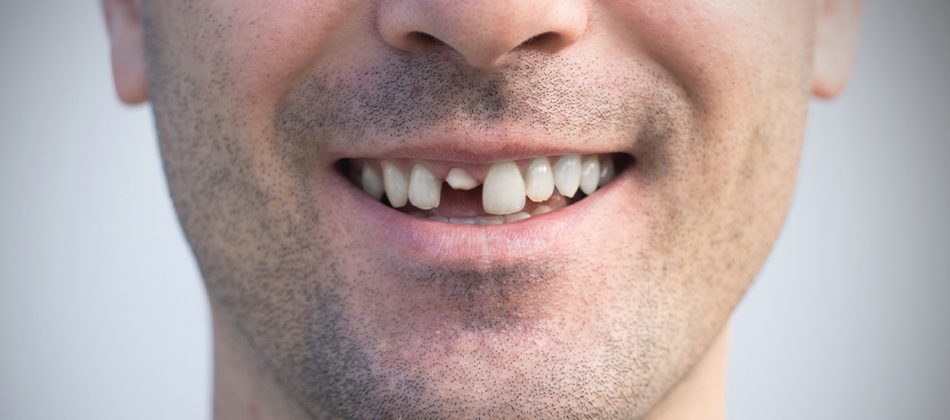Dental Traumas and Treatments
An aesthetic smile is the expression of power;
the smile is the sharp sword of this power.

Dental trauma is the situation where teeth are damaged and damaged for various reasons. These damages may affect the roots, enamel, dentin layer or other tissues of the teeth. It may occur due to reasons such as dental traumas, sports injuries, traffic accidents, home accidents, tooth decay, periodontal disease, and bruxism. In this article, we will give more detailed information about the causes and types of dental trauma.
In addition to these reasons, some dental problems such as bruxism can also cause dental trauma. Bruxism is a condition characterized by clenching and grinding of the teeth, and over time it can lead to breaks, cracks and other damage to the teeth.
Although the causes of dental trauma are quite diverse, when damage occurs to the teeth, it must be treated quickly and correctly.
Proper first aid in case of dental trauma can help maintain a healthy tooth and treat it quickly. The main purpose of first aid is to immediately fix the tooth and control the blood flow of the tissues. Here’s what to do in case of dental trauma:
Remember, in case of dental trauma it is important to see a dentist immediately. Your dentist will choose the appropriate treatment method according to the condition of the tooth.
Treatment of dental trauma may vary depending on the type and severity of the damage. Here is an overview of the treatment methods used for the most common types of dental trauma:
Treatment options for dental trauma vary depending on the type and severity of the damage. The success of treatment depends on early intervention, correct diagnosis and selection of the appropriate treatment method. Therefore, it is very important to consult a dentist who specializes in the treatment of dental trauma.
Dental trauma is a very common situation in children. Various damage may occur to the teeth, especially due to sports activities, games and falls. Therefore, children need to be protected by their families and those around them and appropriate precautions must be taken.
Treatment of dental trauma is done by different methods depending on the degree and type of damage. While small cracks and cavities can be treated with simple procedures such as fillings and crowns, in cases where the tooth is completely broken or lost, more comprehensive treatments such as implants or bridges may be required.
The following precautions can be taken to protect children from dental trauma:
Treatment of dental trauma may vary depending on the age and condition of the child. For this reason, it is recommended to consult a dentist to protect children from dental trauma and to provide the correct intervention in a possible situation.
